Ion Barladeanu has spent decades of his life living among garbage, being incarcerated, working as an illegal undertaker, as a dock worker, as a security guard, and even as a carpenter…until he was discovered by the art world. Or better said, the world was discovered by him.
By Juan José Santos | Translation and special thanks: Jacob Sheehan
I had spoken with Cristian Cojanu, coordinator of Gallery H’art in Bucharest, so that he’d show me the works of some Romanian artists. “Wait here a moment, I’m going to go say hi to the most famous one”, he told me. He walked across the street to the park in front of the building where the gallery is located and made small talk with a group of homeless. Minutes later, Cristian comes back to bring me over to a bench where a group of homeless are seated. “This is Ion”. The man, without making eye contact and translated by Cristian, told me about various fights, how he was friends with Angelina Jolie, whom he had met in Paris, how he was a film director or how he was a renowned artist. He had a pair of slippers on, like the one you’d wear at home (although something told me he didn’t have a house), a dirty jacket that covered an even dirtier t-shirt, and was stumbling over his words as he played with the cap of a bottle containing something mysterious. Everything was like a big collage; the gallery coordinator, the bottle, the homeless man…every element seemed to have been cut from that dismal park in Bucharest. I was finding the conversation enjoyable. Ion, noticing that instead of my leave I continued to question him, finally raised his eyes, sad and buried in dark circles and puffy eyelids, and told me: “When Peter O’Toole and Richard Burton drank, the London sky smiled upon them. When my homeless friends and I drink, the sky in Bucharest darkens”. In that moment, he became a burning bush, and I a shepherd with no sheep.
The homeless artist
Still half idiot, as the words of the homeless or the smell that envelopes them, I went up to the art gallery. There Cristian showed me Ion’s creations. Collages dating back from the 70s and 80s to current works. Parodying characters from gossip magazines to political figures. Particularly focusing on the Romanian dictator, Nicole Ceaucescu. Faced with those works of art, I realized that this homeless man was actually – is – a well-known artist, and that his art should be – must be – in the history of contemporary art.
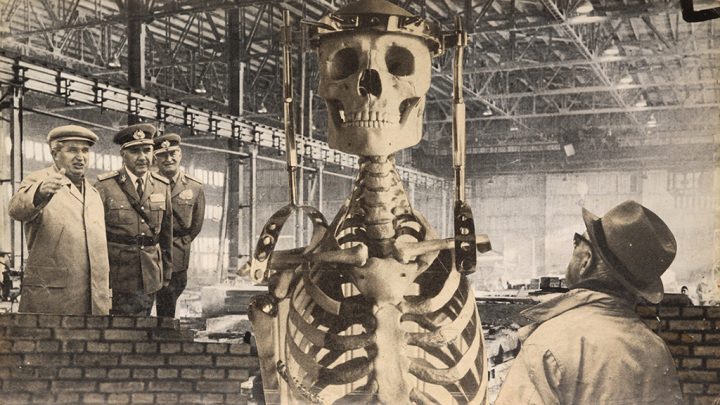
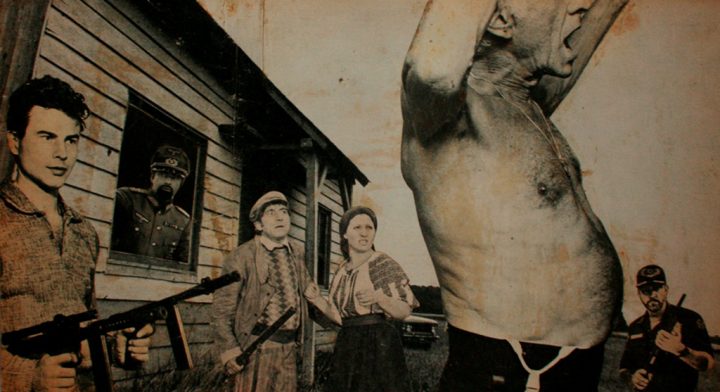
Ion Barladeanu was born in Zapodeni in 1946, but soon afterwards found that his place was in the capital, Bucharest. In the 70’s he earned his living taking on the jobs that nobody wanted, allowing him to live in dignity, as dignified as one could live in that time in Romania, with curfews enforced and the lack of basic freedoms, under a roof. During those years he did all kinds of odd-jobs, working as a carpenter, a dock man in the Port of Constanta, as a security guard, and even as an undertaker with no license, which ultimately led him to be detained and jailed. In his free time, Barladeanu sketched (in a style close to that of George Grosz) and composed hundreds of collages, some absurd and others surrealistic with autobiographical elements, referencing alcohol, tobacco, the lower class struggle, about mass media, fiction vs reality, the technological advances against the backwardness of the regime, or comedic sexual metaphors…setting a sour history, the “B” face of the official. Barladeanu considers himself as a film director, not in the creation of bi-dimensional works of art, but in cinematic scenes.
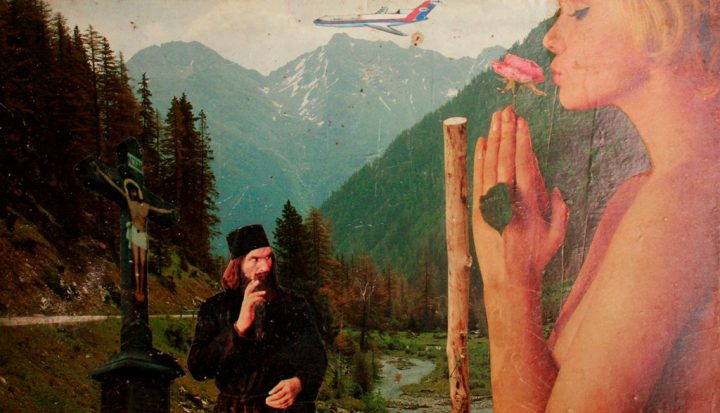
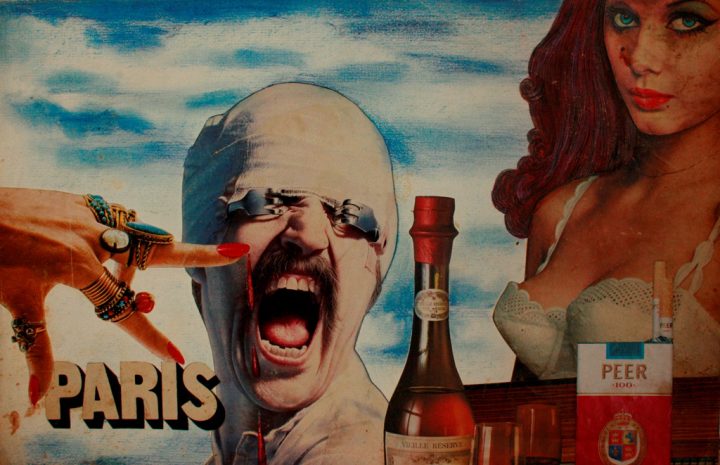
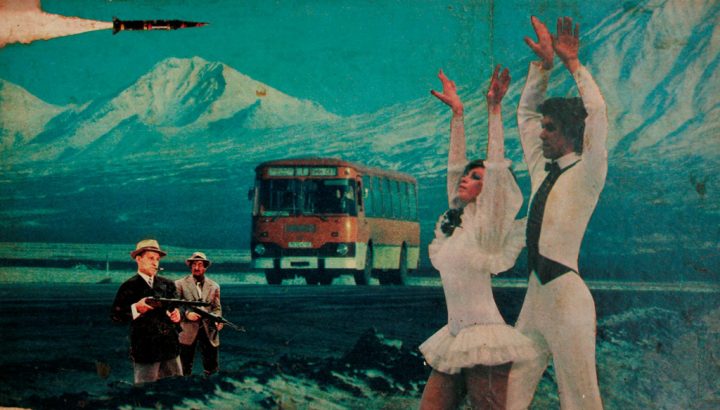
In many of the collages (that for fear of retaliation were kept hidden in suitcases) the artist is entertained by mocking the Romanian dictator, displaying the hands covered in blood, or about to receive a bullet to the temple from a soldier. And that’s what finally happened in 1989, via a televised and grotesque trial in which Ceaucescu and his wife were convicted to an urgent execution. Unknown to Barladeanu was that it was the end of communism and the arrival of capitalism bringing the arrival of a new army of homeless with it, of which he would be the first to enlist. He’d go armed to the teeth (the time it lasted) with bottles of palinka.
The homeless country
When you ask yourself why Romania is one of the poorest countries in Europa the answer is unanimous, Ceaucescu. He and the isolation of everyone, of all of the Western Allies and from the U.S.S.R., which condemned the country to be homeless with no stronghold during the Cold War. Although that’s an incomplete explanation. One must dig deeper to find the roots of misery, both at the time of the beginning of the century, a country run by an aristocracy reluctant to implement the advances of the industrial revolution, as in later territorial altercations (Hungary, Bulgaria, the U.S.S.R., etc…). The imposition of the dictatorship only worsened an already ailing situation. Communism ended in Romania with bullets, and capitalism raged like a bear sinking its claws into its prey. With the new economic system, the old political corruption and archaic work in the countryside continued, and the social inequalities and homeless came with it.
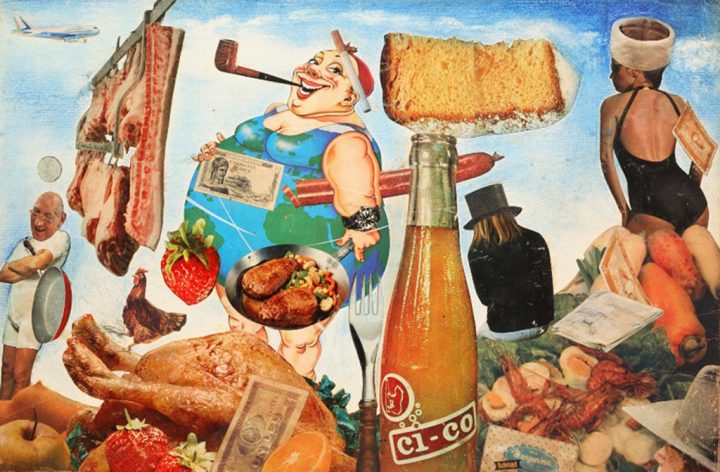
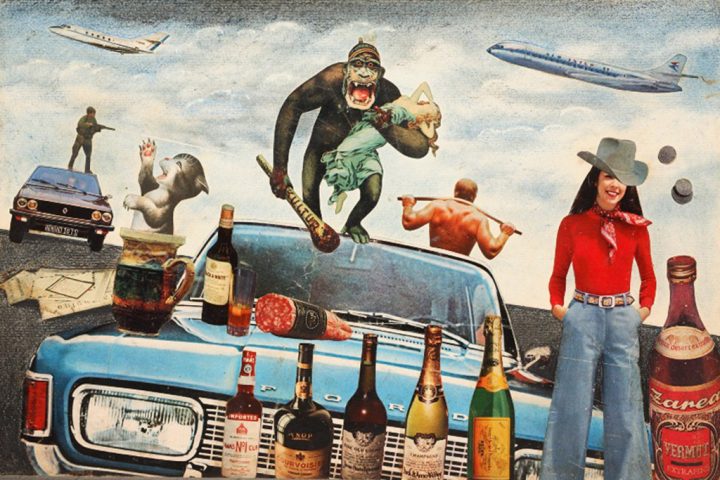
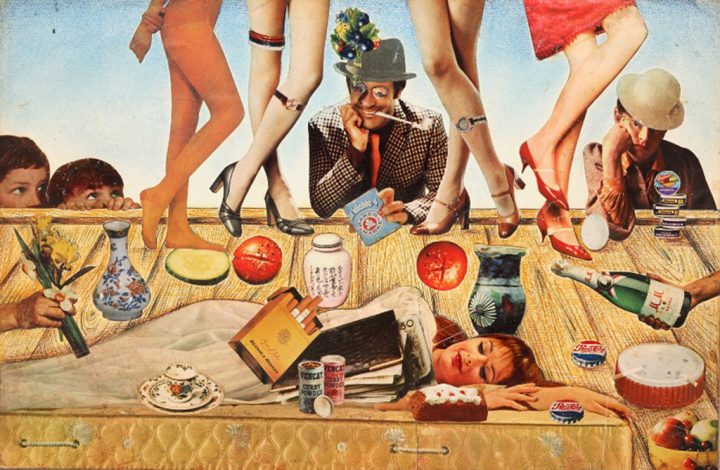
Nowadays, a large number of the population woks abroad. Minimum wage is 218 euros per month, next to nothing compared to 800 or 900 they can earn working in construction in another country. Three million Romanians live outside of Romania, mainly in Italy and Spain (where today there are around 900,000). I don’t know if you understand the proportions. I’ll give an example; if you find yourself reading this in Castellón (Valencia), inside a solid and comfortable new home, in front of a salad with olives, think about how the house was built by Romanians and the olives on your plate were picked by Romanians. But as we said, there are also those who remain in their country. And as we said before, Barladeanu exchanged a passion, art, for another, alcohol. He’s spent almost twenty years drinking, living in the dumpster of a block of various buildings, without making a single collage, until he was found in 2007 by Dan Popescu, director of Galeria H’Art. He put him to work, signing his previous works, making new ones, and even taking shots at video art.
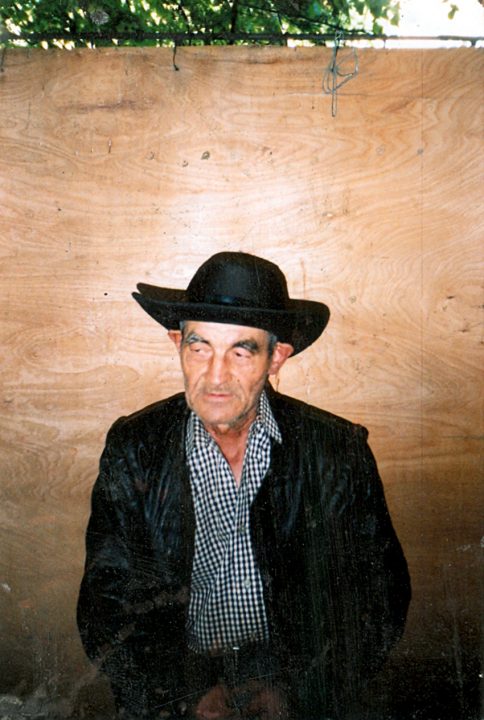
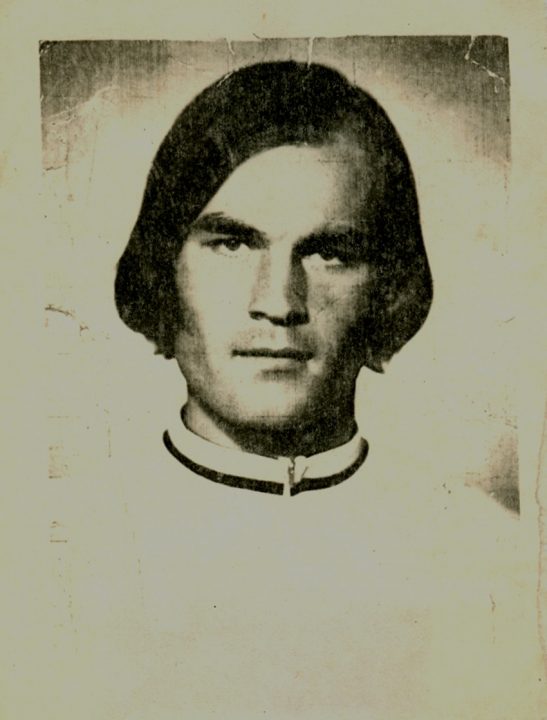
The fable is well told in the documentary “The World According to Ion B.” (Alexander Nanau, 2010). Here we can see a very nervous Ion, painting his shoes black minutes before his first inauguration of an exhibition of his collages, and quieter, during the show, signing autographs for the young hipsters that attended the opening. There are delirious moments, like when Ion asks Dan Popescu, after reading a newspaper that describes him as the father of Pop Art, that ‘what is that about Pop Art’ and ‘who is this Andy Warhol’. Everything makes you think. The theory of pioneering artists, of cultural filth, of domestic property isms, the elitism of the art world, and the value of the work. And what is the role of Dan Popescu and his gallery, that, as we know, aren’t NGOs. The truth is, since 2008 the gallery pays rent for a studio in the basement of the same building (that Ion barely occupies, even though that property prevents him from being qualified as a homeless artist) new teeth, and receives a decent amount of money. In exchange, economic benefits thanks to the possible sales of the collages in international art fairs.
The homeless gallery
Dan Popescu took Ion Barladeanu to the art fair ‘Art Basel’ and helped him organizing an exhibition in Paris. There, an overjoyed Ion, met Angelina Jolie, who not only acquired one of his works, but also ate with him. There’s a photo of the homeless artist with Jolie, in which they are seen laughing like two communist comrades in the Cold War and looking at something on a cellphone, perhaps a photo of Ronald Reagan. That image contrasts with what he told me about the actress when I met him in the park; “Oh, I was with Angelina Jolie, but I told her, ‘Hey, Angelina I don’t want to talk with housewives, who I want to meet is Johnny Depp.” Ion might wear leggings in the street but that doesn’t stop him from being a bit boastful.
The works of Barladeanu won’t return to be seen in art fairs. Dan Popescu, tired of the social and commercial aspect of the fairs, gave up his stand in the Volta Fair in 2012. He left a message written on the wall; “Art isn’t in crisis; art is crisis, and I will not return to more supermarkets”. The director of the fair called him and asked him, “Should I like that phrase?”. Dan replied, “Of course”. Since then, his gallery has been banned from entrance to art fairs.
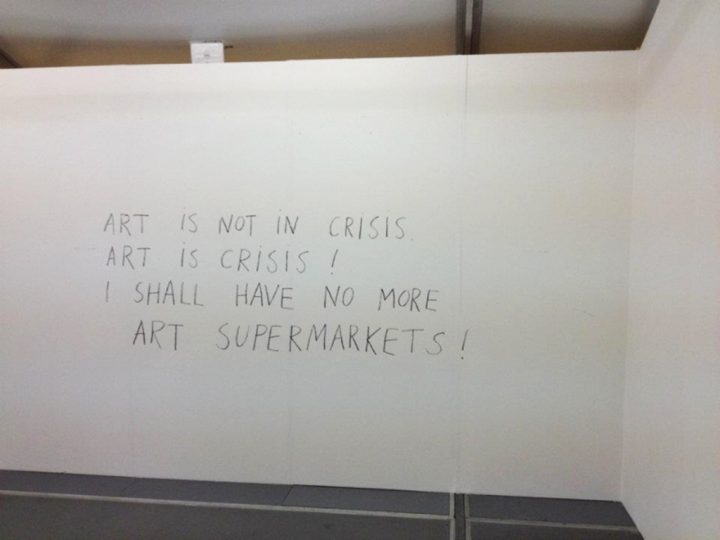
Ion’s secret
After discovering by chance this Ion Barladeanu, and after seeing his works of art, I returned to the park to continue speaking with him. I realized how he acquires his materials; the neighbors bring him magazines and cuts them with his scissors and takes one more step, glueing the figures with Pelikanol (“The Communist Glue”, as he calls it). The artist is accompanied by a bag full of them, looking at them, studying them, reconciling his artistic-anthropologic work, with his humble day-to-day, interrupted by the occasional presence of followers, fans and admiring artists. Ion and I spoke again with that ‘biblical tone’ that terminal drunks fall into; “I’m going to tell you my secret”. I thought he was going to tell me that the collages were stolen, that he had seen all of Angelina Jolie’s tattoos – all of them, or that he was actually a socialist millionare. But no. “When a girl comes to ask me about my art, I ask her to accompany me, that I’m going to tell her a secret. I then proceed to take her to a liquor store and I tell her to buy me some beer”. And then he buried his eyes again, and I kept silent, and I swore never to reveal the secret of Ion Barladeanu.

 Español
Español